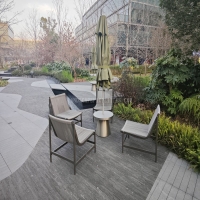Welcome to the website for landscape facilities products and knowledge.
How does the table’s design facilitate easy repair or replacement of damaged components?
Modern table design increasingly prioritizes longevity through strategic engineering that facilitates straightforward repair and component replacement. The foundation of this approach lies in modular construction. Instead of permanent adhesives or complex welded joints, designers utilize standardized mechanical fasteners—such as bolts, screws, and cam locks—that are easily accessible with common tools. This allows for the disassembly of specific sections without compromising the entire structure.
Many contemporary tables feature a segmented design where high-wear surfaces, like table tops, are separate from the supporting base or leg units. Should the top become scratched, stained, or cracked, it can be independently unscrewed and swapped for a new panel, often available as a standalone replacement part from the manufacturer. This modularity drastically reduces waste and cost compared to discarding the entire piece.
Furthermore, designers often incorporate user-centric features to aid maintenance. Protective, replaceable finishes on surfaces guard against daily wear, while designs may include removable caps or plugs that conceal connection points, keeping hardware both hidden and readily available for service. Some manufacturers even provide detailed disassembly guides and sell individual components, empowering owners to perform repairs themselves.
By emphasizing modularity, accessible hardware, and the availability of spare parts, thoughtful table design transforms furniture from a disposable item into a durable, long-lasting asset. This not only benefits the consumer by reducing long-term ownership costs but also aligns with sustainable principles by minimizing environmental impact through repair and reuse.
Related search:

Recommendation
Metal structure rattan chair without armrests for single person, with woven seat and backrest.